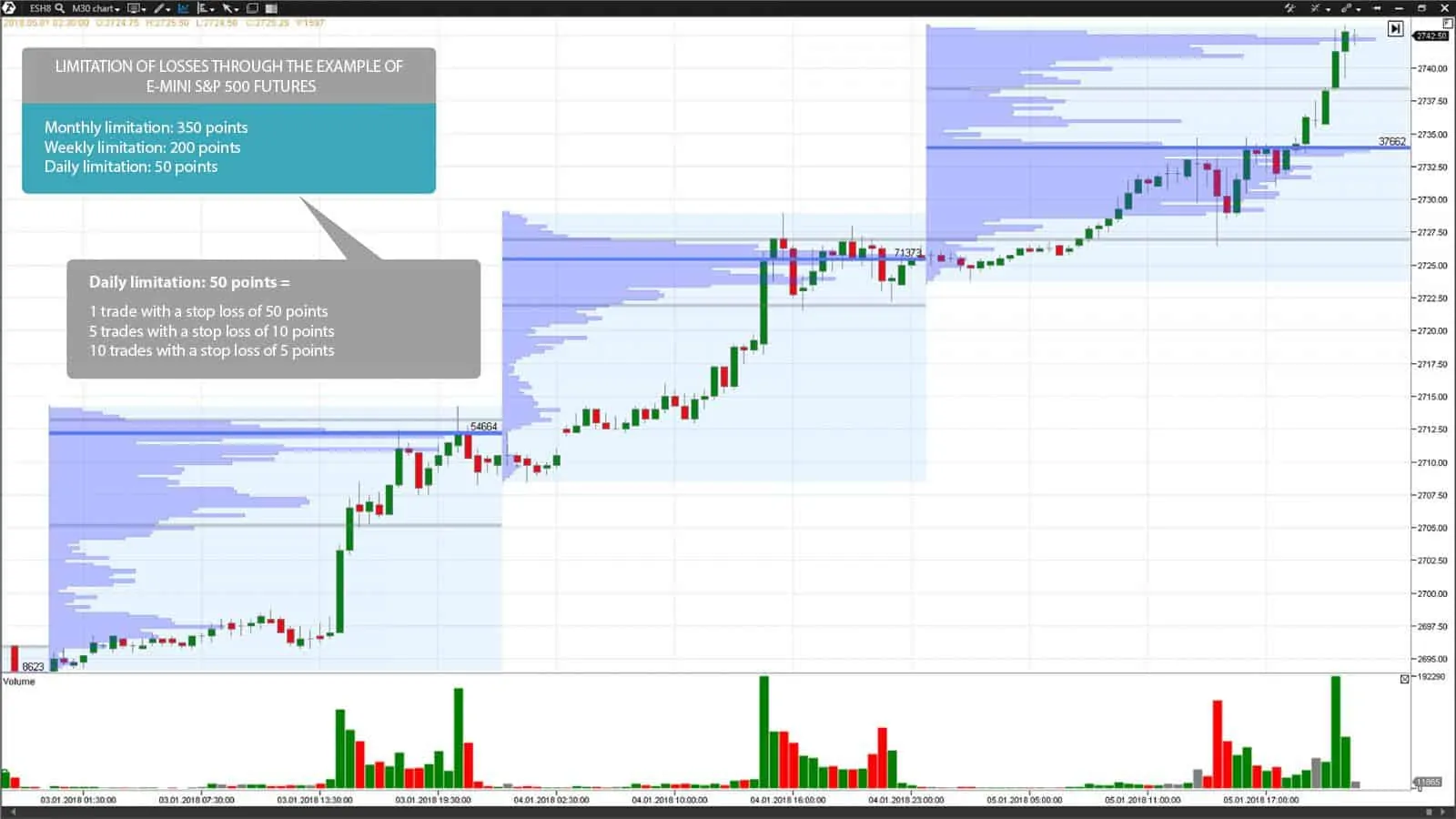Limitation of losses – start to think about money. Сontinued
Hello, friends! We continue to speak about limitation of losses, which we started to discuss in the first part of this article. Every retail trader should try to avoid a situation when one loss-making trade spoils the whole trading day. Similarly, professional traders should avoid a situation when one loss-making day spoils the whole trading week. One-time big loss significantly influences a trader not only from a financial but also from a psychological point of view. To avoid this, it is important not only to manage risks in each trade but also to limit possible loses during a day, week or even month. It would help a trader to preserve his trading capital, required for continuation of trading and making money, for a longer period of time. And here’s how it could be done.
In this article:
- What to do when the loss limit for a day or a week has been exhausted?
- Advice of a professional trader.
- Is the concept of limitation of losses useful for traders?
What to do when the loss limit for a day or a week has been exhausted?
In the even the daily or weekly limit has been exhausted, the further trading should be stopped until the end of the respective period of time. Some prop trading firms sent traders that reached such limits to trade on demo accounts until they restore confidence in the decisions they make. It is well-known that the market volatility strongly increases from time to time and even the best traders are not insured against losses which they make in the result of such strong fluctuations.
Traders often become emotional at such moments, which, in the end, results in making invariably loss-making trading decisions. In such cases, traders, when they start trading on demo accounts, may continue to improve their skills without fear of the risks and psychologically restore after the made losses. Apart from trading on the demo account, the analysis of the loss-making trades, which resulted in the limit exhaustion, without doubt will become the best method of having a rest from trading and will allow to better understand the reasons of wrong decisions. However, to do it properly, traders need to keep the trade register in which they register in detail all their decisions.
Advice of a professional trader
Mike Bellafiore is a mentor and co-founder of the SMB Capital company and also the author of such popular books on trading as ‘One Good Trade’ and ‘The PlayBook’ and he recommends traders to focus their attention on the first six months of trading with the application of the concept of limitation of losses. In his opinion, the setting of daily, weekly and monthly limits should correspond with their trading styles. Too small or too big loss limits could negatively influence the results. That is why traders should allocate sufficient time for finding optimal values.
One more important moment Mike Bellafiore pays attention to is the setting of such a level of the daily limitation of losses, at which a trader could be able to execute 8-10 loss-making trades in a row. Since such an approach is applied by prop trading firms, which have a sufficiently big volume of trading, the setting of such a limitation for a week would become the most optimal variant for an average retail trader.
Besides, when a trader knows his trading strategy well, several loss-making trades in a row are a rare thing. For example, in an average 3 loss-making trades in a row could testify to a bad psychological mood of a trader or about the fact that his strategy doesn’t work well under the current market conditions. One way or another, a series of loss-making trades tells us that a trader misses some information and trading should be stopped. Loss-making trades for days or even weeks are not rare even among the professional traders and only the setting of the loss limit allows to control and keep losses within the acceptable limits.
Is the concept of limitation of losses useful for traders?
It is impossible to overestimate advantages of following the rules of a disciplined trading strategy, which includes risk management methods. The concept of limitation of losses allows traders not only to focus on the loss reduction but it also provides mechanisms of control of their emotional state.
As it was already mentioned, there are several approaches to setting loss limits in trading. Nevertheless, independent of the selected approach, the obvious advantages of such limits significantly exceed a possible discomfort, which a trader could experience as a result of restriction of his actions. Theoretically, there is a probability that a trader could be able to return the lost profit even being affected by emotions and without restricting his further actions by whatever limits. However, in the majority of cases, such a psychological state persuades a trader into gambling rather than into fair-minded trading, which results in even bigger losses.
Although many retail traders dismiss the concept of the limitation of losses, the fact that it is used in many professional trader circles and prop trading firms merely confirms its efficiency in controlling the traders’ emotional state.
One more advantage of the concept of limitation of losses is a possibility to assess trading efficiency under different trading conditions. Such an approach helps traders to consider different variants of application of trading strategies and avoid inefficient methods of trading depending on the market behaviour. It is believed that reaching the daily loss limit should occur rarely – maximum 2-3 times during a month. If a trader executes three loss-making trades in a row every day, he should improve his trading strategy or its realization. In the event a trader executes both profitable and loss-making trades during a day, but in the end he reaches the daily loss limit, most probably, he should improve the risk-reward ratio.
One of the misperceptions lies in the fact that if you set the monthly loss limit at the level of 20% of the trading capital, it doesn’t mean that you limit the general drawdown of the account at the level of 20%. For example, you lost 20% of your trading capital by the results of the first month of trading. Consequently, the drawdown of the trading account constituted 20% for the first month. Then, the situation repeated itself after the second month and you lost 20% again. Now, the general drawdown of the trading account for two months constituted 40% and this is despite the fact that you strictly follow the set rules.
Nevertheless, you shouldn’t immediately reject this concept. The main task of the daily loss limit is to disallow one loss-making day to significantly influence the trading results for a month. Let’s assume that your average profit for a day is USD 100 and you lose USD 300-400 during loss-making days. It is easy to calculate that even if you have 80% of profitable trading days (16 out of 20 days) a month, you could stay at the breakeven level with a difficulty. If you set the daily limitation of losses at the level of USD 200, you would significantly reduce the amount, which you lose during loss-making days, which automatically results in the stable growth of the profit.
Although limitations of losses do not guarantee limitations of the general drawdown of the trading account, the fact of informing you about the exhaustion of the set limits itself would be able to help you to stop trading in time. This would help you to undertake respective steps for an adjustment of your trading strategy and preserve the remaining part of your trading account.
Thus, we can say in conclusion of the subject of the limitation of losses that this method is a part of the risk management. It excellently fits into any trading strategy and helps traders to create a disciplined approach to trading. Different variables could be taken into account when you calculate the limitations of losses, but, first of all, you should take into account the size of the expected profit and the size of the acceptable risk.
Setting the daily, weekly or monthly limitations of losses is not an artificial concept but the method, which is widely used by many professional traders. It not only helps to approach the trading from the technical and analytical points of view, but also provides control over psychological aspects of trading in the financial markets.




